THE TSAR'S SCAPEGOATS: BEILIS, THE CHASSIDIM AND THE JEWS
by Eli Rubin
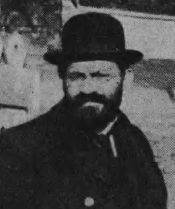
One hundred years ago in September 1913, the blood libel trial of Menachem Mendel Beilis—the 39-year-old manager of a Jewish-owned brick factory—began at the Superior Court of Kiev, Ukraine. Falsely accused of the ritual murder of 13-year-old Andrei Yushchinsky, Beilis was internationally recognized as a stand-in for the entire Jewish nation by both his defenders and his detractors.
The acquittal of Beilis, however, was a bittersweet victory. Even before his arrest, the representatives of tsarist anti-semitism claimed that Yushchinsky had been murdered by what they described as a barbarous Jewish sect—the chassidim. At the trial too, far more time was devoted to the issue of Jewish ritual murder than to the question of Beilis's personal guilt. The verdict was engineered so that the broader question was not entirely laid to rest, even as Beilis himself was freed.
How the accusation was contrived, and how Beilis was vindicated, is the story of an empire in its death throes. The highest tsarist authorities colluded with petty criminals to frame a scapegoat for Russia's woes. But some monarchist elements yet aligned themselves with liberals, Jews and the principles of justice. A conspiracy of power and hate was frustrated by unity, humanity and truth.
Seeds of Evil
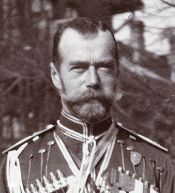
At the beginning of the twentieth century, Russia was beset by political and social crises, culminating in the Russian Revolution of 1917. In the preceding decades liberal agitation and rebellious activity rose steeply, countered by an equal measure of monarchist repression. Unwilling to see their privileges usurped by progressive demands, the supporters of tsarist autocracy blamed all forms of liberalism and anti-government agitation on the Jews. The ills plaguing the Russian people, they claimed, were the result of Jewish-led efforts to erode Russian nationalism, never the results of governmental corruption or incompetence.[1]
Anti-semitic prejudice was given popular voice by a network of ultra-nationalistic organizations, known collectively as the Black Hundreds. Populated by petty bureaucrats, street thugs, nationalist intelligentsia, peasants, landowners and clergy, the Black Hundreds could be mobilized on demand to orchestrate riots and pogroms. Through their political umbrella, the Union of the Russian People, these groups were well connected at the Imperial Ministries in St. Petersburg. In the Beilis case, these connections were used to pull local authorities into step with the machinations of a Black Hundreds plot.[2]
The memoirs of Count Sergei Witte provide intimate testimony to the "unstatesmanlike, vindictive and non-humanitarian" turn in Russian politics, and describe just how deeply the atmosphere was colored by anti-semitism.[3] Witte had served as the prime minister of Russia before the appointment of Pyotr Stolypin, but by Tsarist standards he was overly inclined to moderation and emancipation, and was forced to resign in 1906.[4]
"In his attitude toward the Jews," Witte wrote, "the Emperor's ideals are at bottom those of the Black Hundreds. The strength of that party lies precisely in the fact that their Majesties have conceived the notion that those anarchists of the Right are their salvation . . . Did not the Emperor himself call on all of us to rally under the banners of the Union of Russians, which openly advocates the annihilation of the Jews?"[5]
The Conspiracy
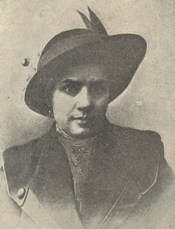
According to the findings of police investigators, Andrei Yushchinsky was lured to the apartment of Vera Cheberiak on the morning of March 12th, 1911,[6] and there murdered by members of her criminal gang. A spate of robberies in Kiev had earlier led police to take note of her criminal activities, and the unwanted attention had sent Vera and her accomplices into a state of vindictive alarm. Suspicious that Andrei—a friend of Vera's son Zhenya—had informed police of their culpability, they silenced him forever. They dumped the mutilated body in a cave nearby.[7]
Under usual circumstances, a minister of justice should be the first to prosecute murderers and defend the innocent. But hatred bends the norm. The murderers of Andrei Yushchinsky were discovered by the police, but they were not prosecuted.[8] Instead, the minister of justice—Ivan Shcheglovitov—conspired with Black Hundreds representatives and government prosecutors to place an innocent Jew in the dock, and have the real murderers testify against him.[9]
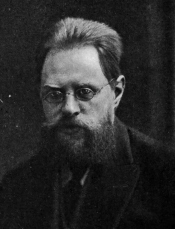
The conspiracy was led by Georgy Zamyslovsky, a right-wing member of the Imperial State Duma, and Valadamir Golubev, a student at the University of Kiev and a local Black Hundreds leader.[10] Zamyslovsky began his career in the Ministry of Justice, and had a good relationship with Justice Minister Shcheglovitov. A self-proclaimed expert on Jewish murder ritual, he had perfected the art of libel in the composition of a book, Victims of Israel: The Saratov Affair.[11]
In Golubev, Zamyslovsky found a willing pupil. In Zamyslovsky, Golubev found a willing accomplice. The student carried out his own investigation in Kiev, and was the first to "discover" the guilt of Mendel Beilis.[12] The legislator used his influence in St. Petersburg to ensure that the representatives of imperial justice would do all they could do bring injustice to fruition. He also wielded his pen in the monarchist press to inspire anti-semitic indignation on a national scale.[13]
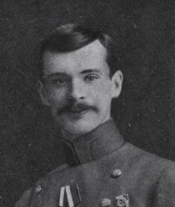
From the conspirators' perspective, it is clear that Mendel Beilis was simply a hook on which they intended to hang the entire Jewish nation. Whether or not this particular Jew had murdered a Christian child was of secondary importance; the crucial thing was to establish the ritual murder of Christian children as a routine component of Jewish religious practice.[14] This purpose was served by another Jew, a small-time hay and straw dealer who sometimes took meals in the Beilis home. His name was Faivel Shneerson.[15]
Beilis was targeted on account of his place of residence. The factory where he worked and lived adjoined the Cheberiak apartment, and he was one of the only Jews permitted to live in the locality.[16] Shneerson was targeted on account of his name.[17] In The Saratov Affair Zamyslovsky claimed that sixty years earlier blood had been sent from Saratov to Lubavitch to be used in religious rituals by Rabbi Menachem Mendel Schneersohn (the Tzemach Tzedek), the third rebbe of the Chabad stream of Chassidism.[18] Zamyslovsky subsequently claimed that every case of Jewish ritual murder in the Russian empire could be traced to the Schneersohn family of Lubavitch.[19]
Hatred and Lies
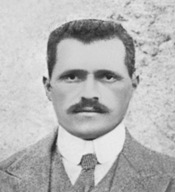
The fact that there was no verifiable evidence whatsoever[20] connecting either Beilis or Shneerson to the murder did not deter Georgy Chaplinsky, Kiev's chief prosecutor. Following the intervention of Zamyslovsky, a special envoy was dispatched from the Ministry of Justice in St. Petersburg to ensure that Chief Prosecutor Chaplinsky would aid student Golubev in every possible way.[21] The tsar himself expressed special interest in the case, and Chaplinsky took advantage of the sovereign's September 1911 visit to Kiev to personally inform him that the "zhid" murderer of Yushchinsky had been found.[22]
Having made such commitments to the great autocrat himself, the conspirators would stop at nothing to bring Beilis to trial. Two police investigators who steadfastly pursued the real culprits were successively framed for petty crimes and removed from their posts.[23] Okhrana operatives and officers of the Kiev gendarmerie worked with state prosecutors and members of the Black Hundreds to fabricate evidence, cultivate witnesses and keep Vera Cheberiak and her accomplices out of jail.[24]
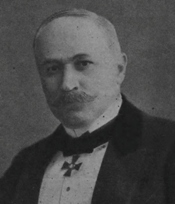
Vera Cheberiak's son Zhenya—the last person seen with Andrei before he was murdered[25]—died under mysterious circumstances, as did his sister Valentina. Their mother successfully prevented them from giving clear statements to police before they died, but subsequently was only too eager to put numerous testimonies in their mouths.[26] It wasn't until her fifth deposition on the topic—delivered eleven months after Zhenya's death—that Vera claimed to recall a crucial piece of information: Zhenya, she testified, had told her that on the morning of Andrei's disappearance the two boys had gone to the brick factory and that Beilis had dragged Andrei away.[27]
The ministerial authorities in St. Petersburg directed these local intrigues, and were kept fully informed. Accordingly, Shcheglovitov and his accomplices ensured that the jury would be composed of people who could be expected to find Beilis guilty on the basis of racial hatred alone.[28] They also arranged for the testimony of experts who would attempt to reinforce the prejudices of the jurors with a false show of science and scholarship.[29]
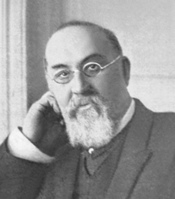
Professor Dmitry Kosorotov, a forensic specialist at the Imperial Military Medical Academy in St Petersburg, testified that the condition of Yushchinsky's corpse proved that he was the victim of a Jewish ritual killing. The minister of the interior, Nikolai Maklakov,[30] paid Kosorotov 4,000 rubles for this service.[31] (Three years later, the same Kosorotov carried out Rasputin's autopsy.) Professor Ivan Sikorsky, a psychiatrist at the University of Kiev, provided similar testimony, welcoming the opportunity to attack the Jews, and demanding no compensation for the privilege. Finally, Justin Pranaitis—an obscure Catholic priest and self-proclaimed Talmudic expert—was brought all the way from Tashkent to demonstrate that Judaism mandated the ritual murder of gentiles.
Unity and Truth
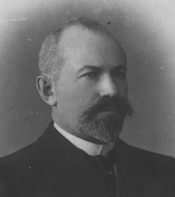
Just days before Shcheglovitov's representative first arrived in Kiev to consult with Chaplinsky and Golubev, local Jewish leaders were already mobilizing to turn the tide of hate. A group headed by the city's chief rabbi, R. Shlomo Ahronson, and a prominent Jewish attorney named Arnold Margolin met with leading representatives of the right-wing nationalist intelligentsia—including Professor Vasily Chernov of the University of Kiev and the editors of the influential Kievlianin newspaper—to discuss the situation.[32]
In the ensuing discussion, Chernov proposed that the Jewish leadership admit to the existence of "a barbarous fringe sect that engages in ritual murder." This was an appeal that would be repeated many times by the prosecutors of Beilis. By pretending to target a specific sect of Jews—the chassidim—rather than all Jews collectively, the representatives of tsarist anti-semitism attempted to preserve a facade of impartial respectability. After the target sect had been proven guilty, such trivial distinctions would no doubt be forgotten by the vengeful mob.[33]
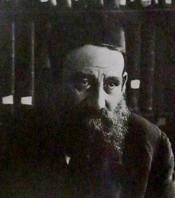
"Among us Jews," Rabbi Ahronson told Chernov, "there are no sects or parties. There are groups of people who have different opinions from one another, but all of them turn on a single axis, the axis of Judaism. The Torah is one for all of us; belief and practice are the obligation of us all. The chassidim are not sectarian at all, but a stream within Judaism: a very important stream indeed."
Presented with a united front, Chernov and his associates could not sustain the delusion that theirs was a civilized, non-pejorative anti-semitism. They were not of the same cloth as the unwashed Black Hundreds mob, nor were they bureaucratic agents of the imperial will. They were the intelligentsia, the moral voice of right-wing politics, and they could not condone the wholesale subversion of Russian justice. In the face of unity, they agreed to stand by the truth. The Kievlianin maintained its strong monarchist slant, but condemned government support of the blood libel as a shameful travesty.[34]
This was only the beginning. About two months after this meeting Beilis was arrested, and it would be more than two years before the trial began. But the precedent had already been set. The Jewish community and their supporters subsequently saw the Beilis case for what it was: not the persecution of one man or of one group, but an attack on the entire nation.[35] Jews who widely disagreed with each other on a variety of religious, political and social issues worked in tandem for the defense of Beilis. Caught between anti-semitic conformance and vile perfidy, some of the more moderate monarchists abandoned the party line to protest the perversion of Russian justice.
In November 1912 a public protest appeared in the government mouthpiece Russia, decrying the blood libel as "a relic of the dark middle ages . . . which has now been adjusted . . . to be placed upon the chassidim." The statement—signed by eight hundred and thirty rabbis from all over the Russian empire—protests "with utmost bitterness against this accusation" and refutes the claim that the chassidim are in any way to be distinguished from the rest of the Jewish nation: "chassidim and mitnagdim are not distinct sects . . . each are equal guardians of our commandments and religious practices, and the same books are holy to each."[36]
The Jewish press reported that this protest was organized by the chief rabbi of St. Petersburg, Rabbi David Katzenellenbogen, along with other leading activists who coordinated the defense of Beilis: Rabbi Ahronson of Kiev; the prominent St. Petersburg lawyers Henrich Sliozberg and Oscar Gruzenberg; and Rabbi Mendel Chein of Nezhin—a Chabad chassid who often represented the communal interests of Rabbi Shalom DovBer Schneersohn of Lubavitch, the fifth rebbe of Chabad-Lubavitch.[37] Another rabbi who played a prominent role in the case was Rabbi Yaakov Mazeh, the official government rabbi of Moscow.[38]
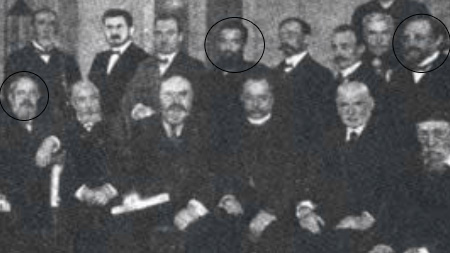
Back in 1910, several of these personalities had represented opposing positions at the rabbinic conference held to discuss Jewish communal representation and law with officials from the Ministry of the Interior. Chein, Mazeh and Sliozberg were among the most vocal participants, widely disagreeing on some deeply divisive issues. But they had never ceased to love one another as Jews, or respect each other as human beings; with the integrity of the Jewish people at stake, such differences were of no consequence.[39]
The Trial Looms
The trial was set to begin two days before Yom Kippur 1913, on the 25th of September according to the Julian calendar. As the day came closer, Beilis's advocates collaborated with local journalists and investigators to identify the real murderers, and also recruited their own panel of expert scientists to unmask the perjury of Professors Kosorotov and Sikorsky.[40]
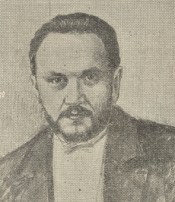
Five of the most famous liberal attorneys in Russia rallied to the defense, nominally led by Oscar Gruzenberg, the only Jew on the team. Strangely enough, one of Beilis's representatives was Vasily Maklakov, a brother of the interior minister who had conspired with Shcheglovitov and bribed Kosorotov to testify against Beilis. Gruzenberg later wrote that the defense of Beilis was not simply a Jewish affair, but one that concerned all Russia.[41]
But it was not enough to defend Beilis: the accusations had been leveled against the entire corpus of Torah teaching, the Jewish people generally, and the chassidic movement specifically. No case could be built against Beilis unless the allegation of ritual murder could be upheld, and both the prosecution and the defense knew it.and the defense knew it.[42]
It fell to Rabbi Mazeh of Moscow—known for his eloquent Russian oratory as well as his knowledge of Jewish law and tradition—to prove that the very notion of human murder was absolutely antithetical to everything that Judaism stood for, and that the chassidic movement had never perverted Jewish tradition or its precepts. In this endeavor Rabbi Chein of Nezhin worked closely with Mazeh, carrying out extensive research, gathering prooftexts, and helping him understand the ethos and history of the chassidic movement.[43]
Two others are known to have helped Mazeh prepare his defense. The first was Rabbi Avraham Chein of Novozybkov—a brother of Mendel Chein—who also penned his own Russian-language response to the blood libel and published it in St. Petersburg.[44] The second was Rabbi Levi Yitzchak Schneerson of Ekaterinoslav, a city five hundred kilometers southeast of Kiev. Rabbi Levi Yitzchak's son, Menachem Mendel, who was about ten years old at the time, would later become the seventh rebbe of Chabad-Lubavitch.[45]
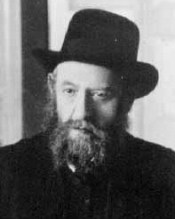
Just three weeks before the trial was due to begin, Sliozberg told Rabbi Avraham Chein that he intended to ask the rebbe himself, Rabbi Shalom DovBer Schneersohn, to make the requisite journey and personally participate in these deliberations. For the rebbe, however, Rosh Hashanah was a time of intense spiritual activity, and thousands of his followers would come to spend the festivals together with him in Lubavitch. His absence during such a time would be extremely difficult for him personally, and would be cause for much public speculation.[46]
But there was another reason that the rebbe considered it inadvisable to take such a step. In a letter to the influential St. Petersburg chassid R. Shmuel Michel Trainin, the rebbe's son Rabbi Yosef Yitzchak explained that this could potentially strengthen the hand of the anti-semites. It would certainly become known that the rebbe was traveling in connection with the trial, and the prosecutors might use this information as evidence that "could drag him personally into the affair." There was real concern that the rebbe himself might be accused of commissioning the murder.[47]
Court Intrigues
The trial lasted longer than a month, and tens of witnesses were crossexamined by both the prosecution and the defense. One of the most visible participants in the proceedings was Vera Cheberiak. Since the case against her was substantive, and the case against Beilis was nonexistent, prosecutors spent far more time trying to prove her innocence then they spent trying to prove his guilt.[48]
When Vera felt that her defenders were not sufficiently persuasive, she took to intimidating young children into repeating her lies from the witness stand.[49]
In an attempt to exonerate Vera's accomplices, prosecutor Zamyslovsky and his colleagues laboriously attempted to prove that they had been busy committing a robbery on the night after Yushchinsky's disappearance. The defense pointed out that it is quite possible for a criminal to commit a robbery in the evening after having committed murder in the morning.[50]
The twelve jurors consisted of seven peasants, three townsmen and two government clerks, and more than half of them were members of the Union of the Russian People.[51] Despite this handicap, they had some difficulty perceiving that Beilis was guilty. In a secret communication sent to the Interior and Justice Ministries, police reported that "the jurymen say among themselves, 'How can we convict Beilis if nothing is said about him at the trial.'"[52]
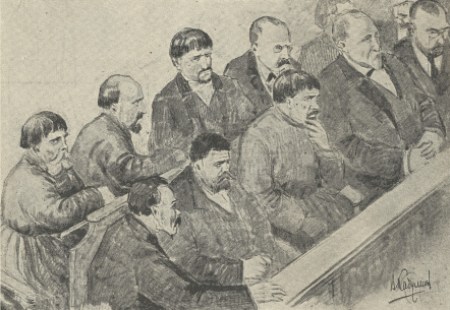
Another government report held out a grain of hope that "the ignorant nature of the jury" combined with "the element of ethnic enmity" would "make it impossible for them to resolve the complex question regarding the existence of ritual murder."[53]
It was to this end that the prosecution and their supporting experts—Sikorsky, Kosorotov and Pranaitis—devoted considerable effort to the vile defamation of the Jewish ethical tradition. Although he claimed knowledge of Talmudic, halachic and Kabbalistic texts, Pranaitis couldn't even read the language in which these works are written. This by no means prevented him from disclosing the sinister blood rituals that they purportedly prescribed.
These rites, he said, were practiced by the cult of chassidim, who were led by their priests, the tzaddikim.[54]
On the comparatively rare occasions when Beilis's name was mentioned, it was usually in an attempt to link him to the chassidim, or to suggest that he was actually a tzaddik himself.[55] In his memoir Beilis recalls with some bewilderment that while in prison he was repeatedly quizzed about the difference between chassidim and mitnagdim, and asked if he was connected with Rabbi Yisrael Baal Shem Tov, the founder of Chassidism, or Rabbi Schneur Zalman of Liadi, the founder of Chabad.[56] During the trial, similar questions were invariably put to every Jew who took the witness stand, and much was made of the fact that Faivel Shneerson had been born in Lubavitch.[57]
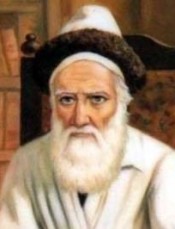
It was the habit of Rabbi Shalom DovBer to have the daily newspapers read aloud to him each afternoon.[58] Understandably, he paid special attention to reports of the trial, and was appalled to hear of the accusations leveled against his grandfather, Rabbi Menachem Mendel Schneersohn (the Tzemach Tzedek), the third rebbe of Chabad.[59] As the trial drew to a close, he wrote to Gruzenberg voicing his distress and enclosing two documents attesting that his grandfather and his descendents had been declared members of Russia's hereditary nobility (потомственное дворянство). "I hope that your honor will find this useful to demonstrate his righteousness, honest conduct, honor and worth in the eyes of the late tsar."[60]
Rabbi Shalom DovBer warmly commended Gruzenberg and his fellow advocates for defending the Jewish people against "our haters and accusers . . . who indict our religion and our Torah . . . which has illuminated the world and all that fills it; and who contrive false libels and lies that the ear can't bear to hear, making us out to be cannibals, G‑d forbid." He held out the hope that G‑d would help them "reveal the truth from amongst the dark lies . . . and roll the stone of disgraceful and false accusation from upon our brethren . . . so that our innocence shall be apparent to all."
Closing Statements
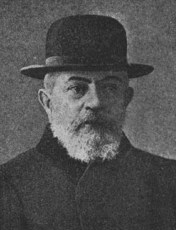
On the very day that this letter was penned, Rabbi Mazeh delivered a resounding defence of Jewish moral values, displaying an encyclopedic knowledge of the Jewish literary corpus. He dealt extensively with the Jewish attitude to non-Jews, the halachic obligation to obey the law of the land, and the fundamental Talmudic exhortation, "What is hateful to you, do not do to your friend." As the Talmud itself declares, "This is the entire Torah; the rest is commentary."[61]
Speaking for about eight hours, Mazeh concluded his presentation with a detailed description of the birth and development of the chassidic movement as a source of renewed vitality within the wider stream of Judaism. The opposition of the mitnagdim, he said, was rooted in the fear that the chassidic conception of divine immanence and accessibility to all would weaken the prestige of Torah study and scholarship.[62]
Mazeh went on to describe Chabad as a more intellectually oriented stream of Chassidism. Rabbi Schneur Zalman of Liadi, he asserted, continues to enjoy renown among all sectors of the Jewish community as an authoritative scholar of the Talmud and Jewish law, as well as for his innovative path of divine service. Mazeh also argued that the publication of Rabbi Schneur Zalman's legal opus, Shulchan Aruch ha-Rav, was instrumental in bringing the last vestiges of mitnagdic opposition to an end.[63]
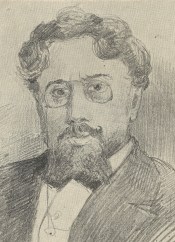
Although Rabbi Shalom DovBer's letter could not possibly have reached Gruzenberg in time for him to pass on the relevant documents, Mazeh did make mention of Rabbi Menachem Mendel's appointment as a hereditary nobleman. He also offered to describe the excellent impression that Rabbi Shalom DovBer himself had made upon him in his personal encounters. But the judge cut him short, saying that his role was to offer expert opinion, not personal testimony.[64]
Ultimately, the hopes expressed in Rabbi Shalom DovBer's letter were only partially fulfilled. Gruzenberg and his fellow advocates successfully appealed to the conscience of the jury, convincing them that they could not in good faith condemn an innocent man. But the larger question of ritual murder and Jewish guilt returned a more ambivalent verdict.
Guided by his higher-ups in the Ministry of Justice, the presiding judge had carefully divided the issues, posing two distinct questions to the jury.
The first question asked if the murder had taken place "in the brick factory belonging to the Jewish surgical hospital," and further asked if it had taken place in a manner calculated to draw "five glasses of blood." Ritual murder was strongly implied rather than explicitly mentioned. The second question asked if Mendel Beilis, personally, had "entered into collusion with others . . . prompted by religious fanaticism, to murder the boy Andrei Yushchinsky."[65]
To the first question the jury replied in the affirmative, "Yes, it has been proved." But the terrible import of this statement was overshadowed by the jubilance with which the second answer was met. "No," the foreman announced, "Mendel Beilis is not guilty"; the courtroom erupted in celebration, and Beilis burst into tears.[66]
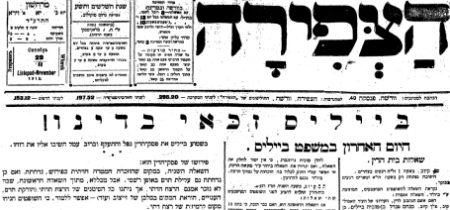
The Jewish press claimed victory, pointing out that the verdict regarding the first question did not clearly specify that a Jewish sect practiced ritual murder. But the ambiguity was not lost on the anti-semitic engineers of the conspiracy. A week after the trial, Union of the Russian People leaders hosted Minister of Justice Shcheglovitov and Beilis's state prosecutor, Vipper, as guests of honor at a dinner held to celebrate their success. Congratulatory telegrams were sent on behalf of all present to Zamyslovsky, Chaplinsky, Sikorsky, Kosorotov and others, proclaiming them "incorruptible and independent Russian men."[67]
Neither was this ambiguity lost on Rabbi Shalom DovBer. When news reached him of the double-edged verdict, the implicit conviction of the chassidic movement and the entire Jewish people caused him severe distress.[68] During this period, Rabbi Shalom DovBer was deeply engaged in composing the epic series of chassidic discourses that came to be known as Ayin-Beit. This demanded considerable intellectual effort, and was constantly at the forefront of his thoughts; he later remarked that the reception of this news was one of only two occasions when his thoughts had been entirely distracted from the chassidic project.[69]
For all the show of unity, for all the show of good faith and humanity, the central problem had not been laid to rest. One hundred years later, the blood libel continues to fuel anti-semitic agitation in the former Russian empire, the Middle East and beyond. Now as then, our only weapons against prejudice, lies and hate are unity, truth and justice.
FOOTNOTES
1. For more on the political context of the Beilis trial, see Alexander Tager, The Decay of Czarism: The Beiliss Trial (The Jewish Publication Society of America, 1935), 1—34, 110—132; Maurice Samuel, Blood Accusation: The Strange History of the Beiliss Case (Alfred A. Knopf, 1966), 97—136.
2. Regarding the role of the Black Hundreds and the Union of the Russian People in Tsarist anti-semitic policy, see Hans Rogger, Jewish Policies and Right-Wing Politics in Imperial Russia (University of California Press, 1986).
3. The Memoirs of Count Witte, trans. Abraham Yarmolinsky (Doubleday, Page and Company, 1921), 379 (henceforth: Witte).
4. Ivan Goremykin held the position for less than three months between the removal of Witte and the appointment of Stolypin. For more about Witte, see Sidney Harcave, Count Sergei Witte and the Twilight of Imperial Russia: A Biography (M.E. Sharpe, 2004).
5. Harcave, 191 and 327.
6. For the most part the dates are given according to the Julian calendar in use in Russia at the time, but the dates of newspaper articles are given according to the Gregorian calendar.
7. For details of the murder, as uncovered by subsequent police investigations, see Tager, 24—27, and Samuel, 15—30.
8. Regarding the arrest of Vera Cheberiak and other aspects of the police investigation, see Tager, 65—71. See also Samuel, 21—23, 25 and 52—54.
9. Tager, 34, 44 and 60—64; Samuel, 28—29, 33 and 53.
10. Tager, 44.
11. See Tager, 61. For more biographical details see A.A. Ivanov, Last Defenders of the Monarchy (Dmitry Bulavin, 2006). The Saratov Affair was published in Kharkov in 1911, and gave a virulently anti-semitic account of a purported murder ritual that was said to have been perpetrated by Jews in the 1850s.
12. Tager, 61—62; Samuel, 53 and 65.
13. Tager, 32, 44, 61, 63 and 72; Samuel, 19.
14. Tager, 22 and 213—214; Samuel, 47 and 80.
15. Regarding Faivel Shneerson, and the allegations made about him, see Samuel, 38, 59 and 156; Leikin, 81—84 and 211—212. A brief reference is made to him in Mendel Beilis (edited by Jay Beilis, Jeremy Simcha Barbar and Mark S. Stein), Blood Libel: The Life and Memory of Mendel Beilis (Beilis Publishing, 2011), 76. See also the account in the trial in The Jewish Year Book 5675 (1915), 41—42, 50 and 52—53.
16. Beilis, 15.
17. See sources cited above, note 15.
18. The Saratov Affair, ch. 6.
19. Ha-Tzefirah, 16 September 1913, page 3, "Be'olamenu."
20. See the testimony of prominent government jurists who refused to be bullied by Shcheglovitov in Arnold Margolin, The Jews of Eastern Europe (Thomas Seltzer, 1926), 210.
21. Tager, 45—48 and 60—63; Samuel, 28—29.
22. Beilis, 54—55; Samuel, 89.
23. Tager, 133 and 190; Samuel, 28—31, 140—141 and 197—198. See also The New York Times, 23 April 1914, "Will Exonerate Beilis: Ex-Russian Police Official Says He Will Clear Up Ritual Murder Myth."
24. Tager, 72—82, 101—107, 116—120 and 181—2; Samuel, 22—23, 68 and 76—88.
25. Tager, 83.
26. Tager, 83—86; Samuel, 53—54, 64—67 and 73—75. Regarding the testimony of Vera's husband, Vasily, in the name of Zhenya, see Tager, 103; Samuel, 79.
27. Tager, 191; Samuel, 155.
28. Tager, 174—177; Samuel, 168—171.
29. Tager, 48—49, 56—59, 199 and 203; Samuel, 82—88.
30. Not to be confused with his brother, Vasily Maklakov, a liberal attorney who actually represented Beilis at the trail. According to Margolin (214), the two brothers lived on neighboring estates but never visited one another.
31. Tager, 55—59; Samuel, 82—84 and 171—172.
32. The following episode was reported in the Jewish daily Ha-Tzefirah, 21 July 1911, page 2, "Behind the Curtain of the Kiev Libel."
33. See Tager, 179; Samuel, 220—221; Leikin, 222; The Jewish Year Book, 52.
34. This stance led to some strange consequences: following the Beilis trial, members of the editorial staff were tried for libel by Vera Cheberiak. See Tager, 81—82 and 106; Samuel, 163—167; Margolin, 190, 200—201 and 233. See also The New York Times, 11 October 1913, "Ritual Murder Case Going to Pieces: Anti-Semitic Journal Denounces the Prosecution of Beiliss as Unjust."
35. In his summation for the defense at the trial, Oscar Gruzenberg expressed this point eloquently, declaring that in the eyes of the prosecution, "if Beilis is not guilty, the Jews are." Samuel, 226.
36. Details of this protest were reported in Ha-Tzefirah, 26 November 1911, page 3.
37. Regarding Chein, his role in Jewish communal affairs, and his relationship with Rabbi Shalom DovBer, see the testimony of Yitzchak Schneersohn (a distant cousin of the rebbe, who should not be confused with the latter's son and successor, Rabbi Yosef Yitzchak Schneersohn of Lubavitch), as recorded in his memoirs and subsequently annotated and published by Yehoshua Mondshine, "Asifat ha-Rabanim be-Russia bi-Shenat 1910", Kfar Chabad Magazine, no. 898 et seq.
38. See Tager, 245; Samuel, 216—217; The Jewish Year Book, 52—53.
39. Regarding the deliberations at the conference in 1910, see Mondshine, ibid.; Shalom DovBer Levin, Toldot Chabad be-Russia ha-Tzarit (Kehot Publication Society, 2010), 296—301; Ilia Lurie, Lubavitch and its Wars: Chabad Hasidism and the Fight for the Image of the Jewish Society in Czarist Russia (Ph.D. thesis, Hebrew University, 2009), chapter 5.4.
40. Tager 147—148, 208 and 245. See also Margolin, 165—166, 201, 211 and 214.
41. Gruzenberg's own memoir—Yesterday: Memoirs of a Russian-Jewish Lawyer (University of California Press, 1981), 104—124—is an ode to the nobility of the many non-Jews who participated in the defence of Beilis. These sentiments are confirmed by a survey of the national press: see Tager, 149 and 154.
42. Tager, 22 and 213—214; Samuel, 47 and 80.
43. Rabbi Zev Aryeh Rabiner, Sefer Rav Yaakov Mazeh Rabah Shel Moskovo (Moreshet, 1958), 54—55; Yehudah Leib Groibort, Sefer Zikaron (Mesorah, 1926), page 31.
44. Groibort, ibid. A Hebrew translation of this work appeared in Rabbi Avraham Chein, Be-Malchut ha-Yahadut (Mossad ha-Rav Kook, 1959), 13—48.
45. See Kovetz Lubavitch, issue 4 (Kehot Publication Society, 1944), 62.
46. Letter by Rabbi Yosef Yitzchak of Lubavitch dated 16 Elul 5673 (1913), published inIgrot Kodesh Admor Maharayatz vol. 16 (Kehot Publication Society, 2010), 30—31.
47. Ibid. See also Marcin Wodzinski, "Blood and the Hasidim," Polin 22 (2009): 285.
48. Beilis, 124—126 and 147—148; Tager, 90 and 182—185; Samuel, 186 and 194—210.
49. Beilis, 123; Samuel, 193—194.
50. Samuel, 198—202; The Jewish Year Book, 49.
51. Samuel, 169 and 172.
52. Tager, 178. See also the complaint in Ha-Tzefirah, 13 October 1913, page 2, "Mi-Beit ha-Mishpat," that Beilis's name is conspicuously absent from the proceedings.
53. Samuel, 174.
54. See Beilis, 151—153; Tager, 199—209 and 212; Samuel, 212—218.
55. Leikin, 54 and 84.
56. Beilis, 32, 74—76 and 80.
57. Beilis, 136—138; Leikin, 211—212; Ha-Tzefirah, 19 October 1913, pages 1 and 4; ibid., 21 October 1913, page 3; ibid., 22 October 1913, page 2; Der Moment, 15 October 1913, page 6.
58. See Reshimot Devarim (2009 edition), 178; Reshimot ha-Rabash (Kehot Publication Society, 2001), 115.
59. See Leikin, 167; Ha-Tzefirah, 7 November 1913, page 5.
60. Letter dated 4 Cheshvan 5674 (1913), Igrot Kodesh Admor Maharashab, vol. 6 (Kehot Publication Society, 2012), 171—172.
61. A complete transcript of Mazeh's speech was subsequently serialized in Ha-Tzefirah, 7—20 November 1913. See also The Jewish Year Book, 52—53.
62. Ha-Tzefirah, 18 November 1913, pages 2—3; ibid., 19 November 1913, page 2.
63. Ha-Tzefirah, 20 November 1913, page 3. Regarding Shulchan Aruch ha-Rav, see Rabbi Shlomo Yosef Zevin (translation by the present writer), "Systematization, Explanation and Arbitration: Rabbi Schneur Zalman of Liadi's Unique Legislative Style."
64. Ibid.
65. The Jewish Year Book, 55—57; Beilis, 163; Tager, 213—214; Samuel, 229.
66. The Jewish Year Book, 57; Beilis, 164—167; Tager, 214; Samuel, 248—249.
67. Tager, 216—218; Samuel, 250—254.
68. He voiced his distress, and argued for the need to find ways to protect Jews from possible acts of aggression, in several letters written in the wake of the trial; see Igrot Kodesh Admor Maharashab, vol. 2 (Kehot Publication Society, 1986), 772—778; ibid., vol. 5 (Kehot Publication Society, 1987), 49—50.
69. See Reshimot Devarim (2009 edition), 179.
Eli Rubin is a writer and researcher. He is chiefly interested in chassidic thought and history, rationalism and mysticism, as well as general Jewish studies. He writes, "I'd like to thank Naftali Loewenthal, Dovid Olidort, Robert Weinberg and Edmund Levin for reading a draft of this article and for providing some very useful comments and corrections. Any remaining errors are mine. More revelations about the Beilis affair, including videos, photographs, and transcripts from the trial, will be published here at Chabad.org in the near future."
This article appeared on the Chabad website and is archived at
http://www.chabad.org/library/article_cdo/aid/2335459/jewish/The-Tsars-Scapegoats-Beilis-the-Chassidim-and-the-Jews.htm